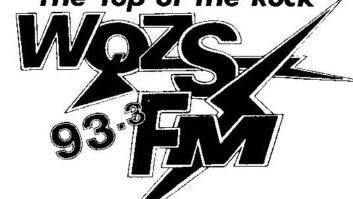Group Loses Tower RFR DecisionWASHINGTON The efforts of an environmental group to persuade the FCC to review radio frequency radiation guidelines appear to have suffered a setback.
The United States Court of Appeals for the District of Columbia has denied a petition from the EMR Network that sought to challenge the model of harm from radio frequency radiation upon which U.S. exposure guidelines are based.
The EMR Network describes itself as an education organization working at the federal level to challenge the so-called “thermal model” of harm from RFR exposure. The group wants RFR to be considered in land use hearings, which would require a change in the Telecom Act.
The group argued that the commission’s refusal to undertake a rulemaking constitutes an improper delegation of its duties to private organizations and government agencies, according to court records.
The three-judge panel wrote in its December decision: “The FCC appears not to have abdicated its responsibilities … the commission has an adequate mechanism in place for accommodating changes in scientific knowledge.”
Analysts say the court’s decision means the FCC is not required to reopen a technical issue simply because a new expert has posed a new theory, or studies cast a small bit of doubt on a prior standard.
“The court ruled the FCC cannot be forced to make decisions that are ‘beyond the shadow of a doubt,’ but rather, such decisions can only be overturned if arbitrary and capricious,” said James Dunstan of Garvey Schubert Barer.
The FCC may rely on the preexisting body of evidence on which the original standard was based in the face of minimal new evidence to the contrary, rather than start all over again and reassess its prior standard every time it is asked to do so, Dunstan added.
EMR Network has connections to a group of Vermont residents who tried to force a radio station near Burlington to move its tower because of fears over ill health effects from RF radiation (see story, page x).
Mary Beth Freeman, one of the original handful of homeowners who sought to revoke WIZN(FM)’s land use permit by appealing to the Vermont Environmental Board, also sits on EMR Network’s board of directors, according to the appeals court decision.
— by Randy J. StineAfter OET-65 Rules Were ‘Attacked Head On,’ Victory in Tower Dispute Is Seen as Significant
BURLINGTON, Vt. A dispute pitting neighbors of a radio station tower against a local broadcaster has been resolved. A state environmental board ruled that new scientific evidence is not strong enough to enact more stringent local guidelines governing radio frequency radiation exposure.
Observers say the tower siting dispute was unique in that homeowners, fearing possible adverse health effects from the electromagnetic radiation of the station’s antenna, constructed an environmental legal argument against the transmitter and tower.
Broadcasters and some industry groups who followed the case, which concerned a tower built in 1987, worried about the long-term impact a negative decision could have on an industry they feel is already coping with harsh tower siting guidelines from communities.
The Vermont Environmental Board ruled in late October that there was not enough evidence to determine that RFR exposure was impacting the health of the station’s neighbors.
“While the evidence in this case raises several concerns about the possible adverse health effects associated with RFR, the Board is persuaded by a preponderance of the evidence that RFR from WIZN(FM) will cause no adverse effect,” stated members in the report.
The homeowners’ group and its attorney claimed WIZN presented undue air pollution caused by the RF, said Gerry Tarrant, the attorney representing the transmitter opponents.
Air pollution is one of the 10 major developmental categories under Act 250 in Vermont that the environmental board regulates, Tarrant said.
“We contend current (FCC) RF exposure standards are outdated and do not take into account low levels of radio frequency radiation absorbed by the body over time,” Tarrant said.
The antenna and tower were erected in 1987 on Pease Mountain. The dispute dates to 1995 when residents near Charlotte, Vt., claimed the facility failed to meet Vermont’s development control laws, known as Act 250. The group then attempted to have the board force the broadcaster to move.
A subsequent board decision found that, when the tower was constructed, it had been unclear whether the site required a state land-use permit. An Act 250 permit eventually was granted in 1999. Opponents appealed it.
Lawsuits by the homeowners’ group ensued, with as many as six filed before various regulatory bodies at one time, including one that claimed the broadcaster’s signal interfered with home appliances.
The environmental board held a series of open meetings in April of 2004 to discuss revoking the broadcaster’s permit, and reached a decision in October.
“This was a significant win for broadcasters. I know of no other case where the FCC’s OET-65 rules, which set the maximum permissible exposure to radio frequency radiation, were attacked head on,” said Fred Hopengarten of WIZN’s legal team. “Residents were asking the Environmental Board to set levels dramatically lower.
“We proved that the science doesn’t change. In fact, the FCC is always reviewing and updating OET-65,” Hopengarten said.
WIZN is licensed to Vergennes, Vt., and operates at 50 kW.
The ongoing litigation eventually caused the radio station’s owners to consider moving the tower to an alternative location, Hopengarten said, though none of the options worked out.
The station, owned by Burlington Broadcasters Inc., spent close to $1 million in defense expenses, said Jay Williams, chief operating officer.
“We are local and committed broadcasters who faced a lot of trumped up and overblown charges. We felt it would have been disastrous for us and the industry to have lost this case,” Williams said.
The board concluded that there is no persuasive evidence that RFR can cause cancer or any other adverse non-thermal health problem, Williams said.
“The small levels of RFR the general public can get from our tower is less than what our opponents got from holding their cell phones to their ears during the proceedings,” Williams said.
Despite what he termed the “landmark status” of the case, Williams said neither the National Association of Broadcasters nor the Vermont Association of Broadcasters offered much legal or financial support
“This is an industry problem and is not unique to Charlotte,” Williams said. He acknowledged that NAB provided names of RF consultants but said the association didn’t provide more.
An NAB spokesman said the association can provide legal or engineering assistance to members, but not financial aid.
Vermont Association of Broadcasters Executive Director Alan Noyes said, “Burlington Broadcasters did contact us originally in regards to this issue,” but that the organization elected not to become involved.
“It was our policy and still is our policy not to become involved in lawsuits between two parties.”
Tarrant said the homeowners’ group plans no appeal.
“The group feels we presented the board with the best information we had and still lost. The judicial process is about the process, not outcomes.”












